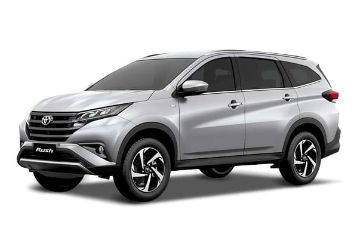![Basic car mods that can make a huge difference in performance 01]()
Upgrading or modifying your car can be daunting, especially if you’re unsure where to start.
Before modifying your ride, you must determine what you want to improve. Is it the overall handling, horsepower, engine efficiency or stopping power?
From there, you can start inquiring and researching what’s available and who can do it. When setting a budget for aftermarket performance mods, implement it one at a time to see how it impacts your car.
By doing so, you’ll be spending sensibly and can better understand its impact on the overall performance.
To give you a general idea about basic car mods that impact your car's performance, here are some basic upgrades depending on what aspect of the vehicle you want to upgrade and, more importantly, your budget.
In most cases, if one makes practical decisions and does a little internet research before buying/installing something, it will most likely result in a better-performing car.
Air intake systems
![air intake]()
Let’s start with the hugely popular and essential aftermarket air intake system that helps improve engine performance.
Almost all aftermarket intake systems use a high-flow (low-restriction) filter element, which allows the engine to ingest air much easier. This explains why people who know cars realize the performance gains from installing an aftermarket air intake system.
Stock air intake
Aftermarket drop-in (reusable) filters allow more air than the stock paper (disposable) filter, making the airflow into the engine more efficient.
Cold air intake
This system uses a long tube to mount the air filter away from the engine compartment to draw in the coolest air available.
Short-ram air intake
This is the most commonly used aftermarket intake, featuring a short pipe connecting the throttle body to a conical air filter mounted near the factory.
Exhaust systems
![aftermarket exhaust]()
Consisting mainly of the headers, the exhaust piping and the muffler, aftermarket performance exhaust systems can help increase engine power.
This allows for a quicker and more efficient path for exhaust gases to escape making the engine breathe better. Depending on the engine type, the design and size of the headers can vary.
Axle-back
This entails replacing only the stock rear muffler with a free-flowing one, which has the least effect on performance and fuel economy.
Cat-back
This one replaces the stock exhaust system from after the catalytic converter to the muffler and moderately affects fuel economy and power.
Header-back
Aftermarket headers, performance mufflers and larger tubes replace the entire stock exhaust system. This mod has the most significant impact on performance and fuel economy.
ECU tuning
![ecu tuning]()
All factory-supplied electronic control units (ECU) come pre-programmed for a specific engine in its stock configuration.
Once aftermarket performance parts are added, it is beneficial that the ECU have its engine operating parameters adjusted.
Simply put, ECU tuning is the art and science of fine-tuning the factory-installed ECU program that matches the mods done to the engine.
Tuning is done via a laptop and should be verified using a dynamometer to measure gains or losses.
Piggyback
This system uses the factory ECU, but can take control and alter the air-fuel ratio (rich/lean) and control spark timing (advance/retard) to make more power.
Examples: Unichip, E-manage, AEM F/IC
Modified stock ECU
A modified stock ECU entails replacing the chip with one reprogrammed with a custom tune.
Examples: Hondata S300 and KPro
ECU reflashing
This entails flashing the stock ECU with a custom program generally done via the car’s factory OBD-II scan port.
What’s great is that it can be reverted.
Examples: COBB AccessPORT, Hondata FlashPro
Standalone ECU
This completely replaces the factory ECU as it can do everything plus much more than the factory ECU.
Examples: AEM Infinity EMS, Haltech, MoTeC
Lowering springs
![lowering spring]()
Installing lowering springs is a popular choice for improving a car's appearance and handling characteristics.
A lowering spring can make the car feel more "planted" to the road for better cornering by lowering its center of gravity. Lowering springs will also give the car a more aggressive stance and reduce the vehicle’s fender gap.
This upgrade will function even better if it is paired with a set of aftermarket dampers that are made to work with lowering springs.
Pros
- Cost less than coilovers
- May utilize the stock dampers
- Quick and easy to install
- Better handling
- Better aerodynamics
Cons
- You can only lower the car by a few inches
- May cause premature shock absorber damage
- Firmer ride quality
- Scraped body panels from steeply inclined ramps
- Uneven tire wear
Tire upgrade
![performance tire]()
Being the only components that are in contact with the ground, tires serve an essential role, delivering mechanical grip (traction), comfort and safety.
How well they perform largely depends on the quality of the tires and the type of driving.
Plus-sized performance
This hugely popular aftermarket tire/wheel upgrade known as “plus-sizing” involves mounting bigger wheels and tires to improve a car's looks and overall handling.
Performance-wise, the handling becomes more responsive.
Plus zero
The wheel remains the same while the tire is changed to a wider one for improved traction and quicker response.
Plus one
If the wheel size increases by one inch, it is “Plus One.”
A Plus One fitment for a car with 16-inch original equipment wheels would use 17-inch wheels.
Plus two
If the wheel size is increased by two inches, it is “Plus Two.”
16-inch original equipment wheels and tires would be 18-inch wheels and tires.
Plus three
If the wheel size is increased by three inches, it is “Plus Three.”
For example, a plus two fitment for a car with 16-inch original equipment wheels would be 19-inch wheels and tires.
Plus sizing tip:
The new wheel and tire combination should be within 3 percent +/- the original tire diameter.
Big brake upgrade
![big brake kit]()
In terms of brake upgrades, size matters.
That's because braking performance greatly depends on how much surface area the brake pads can bite into. Larger pads and brake discs make for shorter stopping distances.
Big-brake kits typically include bigger discs with multi-piston calipers and stainless-steel braided lines that won’t swell under pressure.
Benefits
- Shorter stopping distance
- Firmer brake pedal and brake modulation
- Heat displacement
- Piston size variances
Summary
Before upgrading or modifying things on your car, please make sure it is in proper working order.
Refrain from neglecting underlying mechanical issues or else modifications only asks for trouble. It will only cost you more in the long run when you inevitably break something.
Once that’s taken care of, determining what aspect of your car needs upgrading or modifying should guide you on what aftermarket parts to install.
Just remember that it’s not always about buying the most expensive part out there. Even the most expensive part will be useless if it’s not correctly installed or executed.
So, do your research, ask around and plan. Most importantly, enjoy the process and learn from it.
Did you love this story? Give it five stars now!











